Home Site Map - Techniques - Tools -
Saw Mill
![]() If you have a forest and you are building a house then you need a
SawMill.
If you have a forest and you are building a house then you need a
SawMill.
Intro
My plot is 24 acres of forest. Even though my house is made of concrete there is a lot of lumber needed in the process of building it and for the interior trim. What's needed is a sawmill to cut the trees into planks. Note that in my house design, none of the lumber is structural so there is no need for the lumber to be tested and certified.
SawMill Supplier
After researching what sawmills were available, I purchased a bandsaw type from Linn Lumber in Oregon.

In my case I chose to have a 10HP electric motor rather than having the noise of the gas power variant.
http://www.linnlumber.com/page4.html
It can handle logs of up to 36" diameter and with the 30 feet of track I purchased it can cut 26 foot long logs.
Chris King,
LINN LUMBER LLC ,
30094 Ingram Road,
Lebanon,
OR 97355
541-367-6900
LinnLumber (at) live.com
Here are some pictures of my sawmill during manufacture...
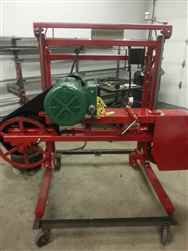
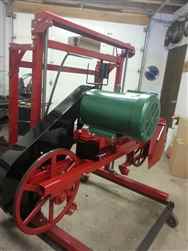
Cutting a log
Start by cutting a flat edge on top.
Depending on the log, it is good to cut a 2-by off the top as part of cutting the top flat. Vertical metal posts (the outer one with a tooth) are used to hold the round log.
Once you have a decent flat surface then rotate the log 90 degrees and cut a second flat. Then rotate the log again so there is a flat side down and a cut right angle against the little tooth (on the left of the picture). You do not now need any vertical metal posts to hold the log so remove them so they are not in the way.
Now cut planks. Eight turns of the height crank will cut a plank 1.5" wide. Be careful as you successively move the blade lower that you have remembered to remove the vertical metal posts. If you ever have need to move the log, make sure the log is still square to the blade (you can judge this by moving the stationary blade back across the surface and seeing if the saw dust is scraped evenly).
I typically cut the planks to as wide as possible with a straight edge just on one side. I then cut off the ragged edge using a table saw. I also clean up the straight edge using the table saw. I then cut the plank to the required width for the specific job using the table saw.
Even though I cut to lots of custom sized based on what I need for a specific job it is worth keeping in mind the standard sizes (as you would get from HomeDepot or Lowes. The standard sizes are...
2x12 1.5" x
11.5"
2x10
1.5" x 9.5"
2x8
1.5" x 7.5"
2x6
1.5" x 5.5"
2x4
1.5" x 3.5"
Even when I used to buy lumber from HomeDepot and Lowes I would trim the width down a bit to get a nice clean edge, ie a 2x6 only actually yields a usable width of about 5".
With the fine smooth cut that the SawMill produces it is not necessary to plane the planks. If you do want a totally clean finish then you can use a palm sander, or better still a 4"x24" hand-held belt-sander.
Instruction Manual
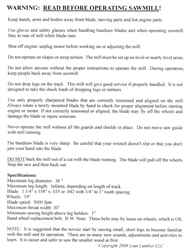
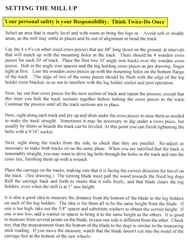
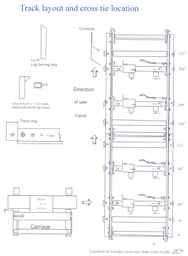
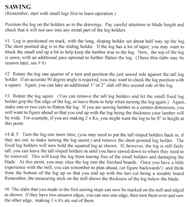
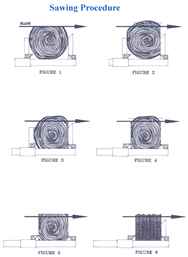
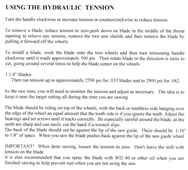
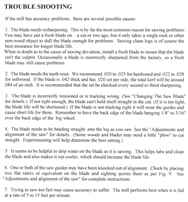
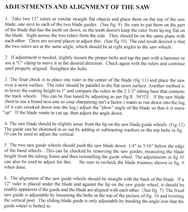
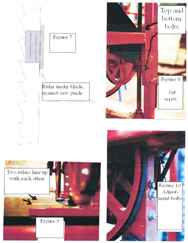

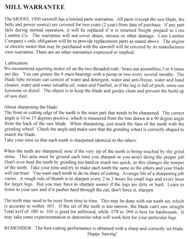
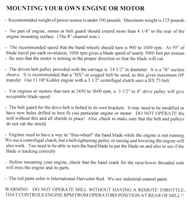
Track details...
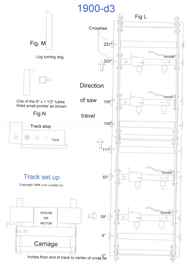
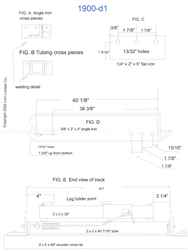
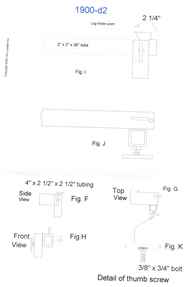
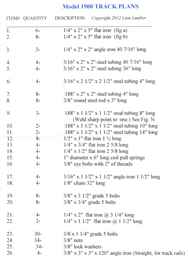
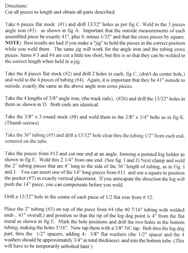
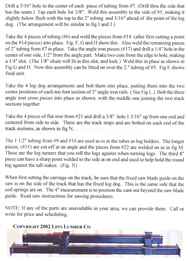
Sawmill shed
It is worth building a small shed to shelter the sawmill cutting head when not in use.
Log handling
Getting the logs gathered and onto the SawMill track is no easy task.
I made a couple of these wheeled contraptions to help in the process...
The following photos show a previous older implementation of the carts.
One of these is attached to each end of the log using straps. The cart at the back also has a strap to tie its handle to the log. The wheel diameter is 12 inches.
Drying the wood
Live wood straight from the live tree has a high water content. Wood shrinks as it dries. The shrinkage is mainly across the rings rather than along the length. The shrinkage can be as much as 7% between the freshly cut planks and the dry planks you will use in construction.
We cut the planks with a thickness of 1-5/8" and after drying they end up at about 1-1/2".
The lumber you buy in the big box stores is dried in a kiln because that is a quick way to dry it. We don't have a kiln so it takes about a year for the wood to dry. To dry it over the year you need to make a wood pile, but it needs to be done right or the wood will warp.
Start with making an accurately flat base...
Wood spacers (called snickers) are accurately cut with a height of 1". The width is less important but I use 1.5". The snickers are placed every 2 feet.
Add more snickers between each later as you build up the pile...



